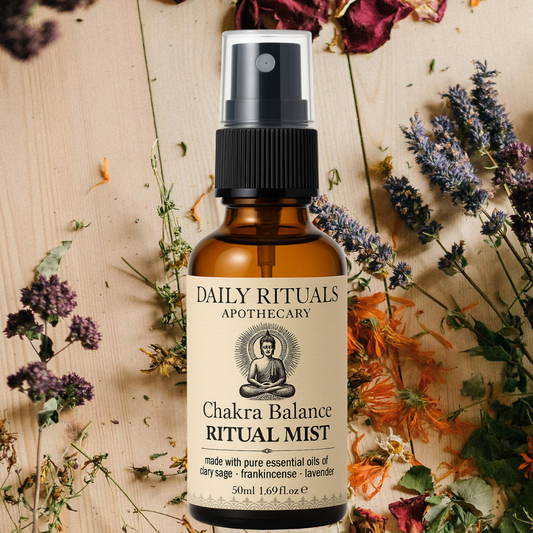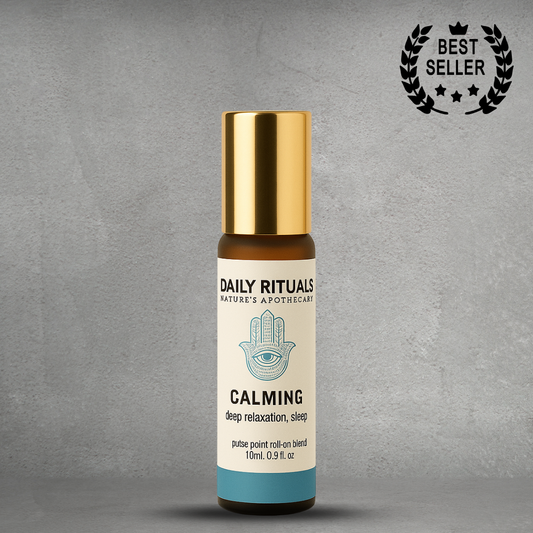
Blue Lotus: The Sacred Flower for Calm, Clarity & Spiritual Connection
In the world of natural wellness, few botanicals carry the mystique and history of the Blue Lotus. Known as Nymphaea caerulea, this sacred flower has been used for thousands of years — not just for its beauty, but for its powerful emotional, spiritual, and psychoactive properties. And now, in 2025, Blue Lotus is experiencing a renaissance as more people seek natural tools for nervous system regulation, ritual, and spiritual connection.
A Brief History of the Blue Lotus
Blue Lotus traces its roots to ancient Egypt, where it was considered a symbol of rebirth, the sun, and divine consciousness. You’ll often see it in temple murals, in the hands of gods and goddesses, or floating atop sacred waters. The Egyptians believed it had the power to open the heart, calm the body, and elevate consciousness.
It wasn’t just symbolic. Blue Lotus was commonly steeped into teas, infused into oils, and used in ceremonial blends — both for relaxation and spiritual insight. Some scholars suggest it was used as a mild euphoric, opening the heart and mind during ritual and social gatherings.
What Makes Blue Lotus So Special?
Modern research is catching up with what ancient cultures already knew: Blue Lotus contains two active alkaloids — apomorphine and nuciferine — that offer gentle psychoactive effects. Apomorphine is a dopamine agonist, which means it may help elevate mood and promote a sense of wellbeing, while nuciferine has mild anti-anxiety and calming effects.
While it’s not a sedative in the traditional sense, Blue Lotus works subtly to:
-
Calm the nervous system
-
Soothe mental chatter
-
Enhance meditative states
-
Deepen sleep when used at night
-
Open the heart and support emotional release
In short: it invites you into a softer, slower way of being — which is exactly what so many of us crave in an overstimulated world.
Current Wellness Uses
Today, Blue Lotus is making its way into:
-
Herbal teas & tonics
-
Aromatherapy blends
-
Oil infusions (for use on skin, pulse points, or in ritual)
-
Ceremonial smoke blends
-
Elixirs used in meditation, breathwork or heart-opening practices
Some also pair Blue Lotus with cacao, rose, or frankincense for a heart-centered, euphoric experience.
In aromatherapy, Blue Lotus essential oil is prized for its intoxicating floral scent — deep, slightly sweet, and meditative. It's often included in perfume oils, meditation blends, or “divine feminine” rituals, where the goal is to soften, receive, and return to inner wisdom.
How to Use Blue Lotus in Daily Ritual
1. As a Natural Perfume
Apply a Blue Lotus-infused oil to your wrists and heart space before meditation or a journaling session. The scent lingers and helps anchor your focus.
2. In an Evening Ritual
Blue Lotus can be paired with other calming botanicals like lavender or mugwort. Add to a bath or mist your pillow for a dreamier, more peaceful sleep.
3. In Ceremony or Women’s Circles
This flower is often included in rituals focused on the divine feminine, self-love, or emotional healing. It helps invite openness and release stored emotional tension.
4. In Breathwork or Yoga
Blue Lotus supports parasympathetic activation (the "rest and digest" state), helping you drop into a more grounded, receptive space.
Is It Safe?
Yes — when used properly, Blue Lotus is considered safe and non-addictive. It’s typically used in small doses and is not classified as a controlled substance. That said, as with any herbal product, quality and sourcing matter. Always choose organic or ethically wildcrafted Blue Lotus, especially when using it for teas or oils.
Why It Matters Now
Blue Lotus is having a comeback moment for a reason: it invites presence, softness, and surrender. In a culture of productivity and push, it offers something radically different — a return to inner calm and ancient wisdom.
As more people move away from synthetic mood enhancers and seek plant-based nervous system support, Blue Lotus is stepping forward as a powerful ally. It’s more than a trend — it’s a reconnection to the sacred.









